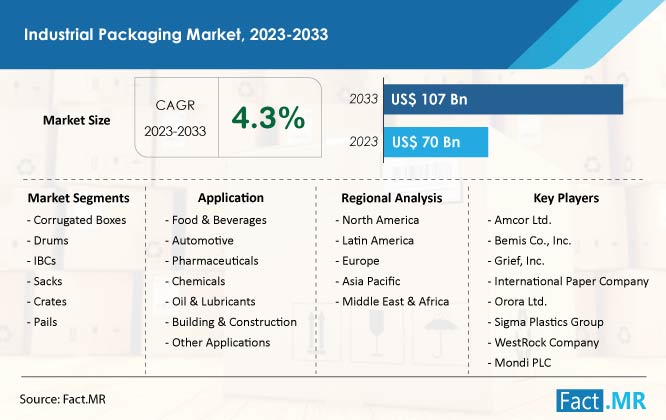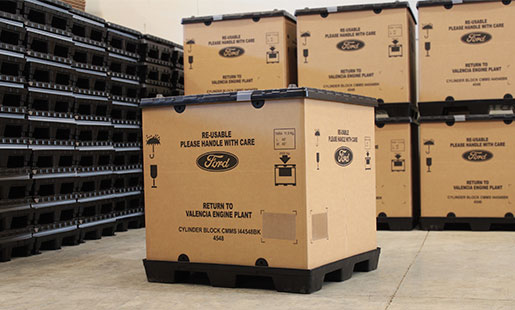Metallic Might: Industrial Metal Packaging Solutions Redefined
Metallic Might: Industrial Metal Packaging Solutions Redefined
Blog Article
Efficient Industrial Recycling Solutions for Lasting Packaging: A Comprehensive Guide
In today's progressively environmentally-conscious world, the demand for lasting product packaging remedies has actually never been higher. To meet this demand, businesses across sectors are proactively seeking effective industrial recycling options. Nevertheless, browsing the complicated landscape of sustainable packaging can be challenging without a detailed overview. That's where this thorough guide on efficient industrial recycling remedies for lasting packaging is available in. By checking out vital locations such as packaging material choice, designing for recyclability, implementing reusing facilities, teaming up with reusing companions, and monitoring and determining reusing success, this guide will certainly outfit you with the understanding and devices required to make enlightened choices and drive positive change within your company. Whether you're a packaging specialist, sustainability manager, or just curious about the topic, this overview will certainly give valuable understandings and approaches to help you navigate the globe of sustainable product packaging.
Packaging Material Option
The choice of packaging products plays an essential function in ensuring the sustainability of commercial recycling options. When it pertains to lasting product packaging, the selection of materials is crucial in minimizing ecological influence and taking full advantage of reusing effectiveness. Selecting the best products can help in reducing waste generation, save resources, and promote a round economy.
Products like cardboard, paper, glass, and certain types of plastics can be reused multiple times without shedding their quality. On the other hand, materials that are hard to recycle, such as non-recyclable composites or combined plastics, can produce obstacles for the reusing process and may finish up in land fills or burners.
Another factor to consider is making use of renewable and eco-friendly materials. Packaging made from renewable energies, such as plant-based plastics or biopolymers, can assist minimize reliance on fossil fuels and alleviate climate modification. Additionally, biodegradable materials break down normally with time, reducing the accumulation of waste in landfills.
Additionally, the weight and volume of product packaging products ought to be reduced to minimize transport expenses and energy intake. Light-weight materials not just call for fewer resources throughout production yet also add to lower carbon exhausts throughout transportation.
Designing for Recyclability
Product packaging developers should prioritize the use of products that are extensively accepted for recycling and have actually established recycling infrastructures. Products such as glass, aluminum, and particular kinds of plastic, like Animal and HDPE, are generally recycled and ought to be preferred over materials that are challenging or pricey to reuse.
An additional crucial consideration in designing for recyclability is the elimination of unnecessary parts or materials. By minimizing the number of layers, finishings, and added components, packaging can be made simpler and less complicated to recycle. In addition, designers must intend to reduce using blended products, as they can complicate the recycling process.

Implementing Recycling Facilities
Effective execution of reusing infrastructure is important for the success of commercial recycling remedies. Without appropriate infrastructure in position, the recycling process ends up being ineffective and ineffective, impeding the general objective of lasting product packaging.
To implement reusing framework efficiently, a number of key aspects require to be taken into consideration. There should be a well-organized collection system that helps with the separation and collection of recyclable materials. This can consist of designated recycling containers in public areas, along with partnerships with waste monitoring business for curbside pickup and sorting.
When accumulated, the recyclable products need to be transported to reusing centers in a prompt way. This needs effective logistics and transport networks, ensuring that the materials get to the proper facilities without delay.
At the recycling centers, advanced sorting and processing technologies need to remain in area to divide different kinds of products effectively. This consists of the use of automated arranging equipments, optical scanners, and hand-operated sorting methods.
In addition, there need to be a durable market need for recycled about his materials. This can be achieved via collaborations with suppliers and markets that use recycled materials in their production processes. Developing a stable market for recycled materials incentivizes the recycling industry and promotes the round economic situation.
Collaborating With Recycling Allies

One trick element of working together with recycling companions is the facility of clear interaction channels. It is very important to develop open lines of communication to help with the exchange of details, updates, and feedback. This enables both celebrations to remain notified regarding the development of recycling efforts and attend to any challenges or concerns that might arise.
In addition, collaboration can involve collaborations in executing and creating recycling programs. Recycling companions can provide beneficial insights and advice in creating efficient collection systems and determining the most proper recycling innovations. By collaborating, services and recycling partners can maximize the recycling process and minimize waste.
In addition, partnership can expand beyond the functional elements of reusing. It can also encompass campaigning for and education and learning campaigns. By signing up with forces, businesses and reusing companions can increase recognition concerning the value of reusing and advertise the adoption of lasting packaging practices amongst customers and various other stakeholders.
Tracking and Measuring Recycling Success
To ensure the efficiency of commercial reusing solutions and the accomplishment of sustainable product packaging objectives, it is vital for click for info organizations and their reusing partners to develop an extensive system for tracking and gauging reusing success (industrial metal packaging). Determining and tracking reusing success permits businesses to assess the influence of their recycling initiatives, recognize locations for improvement, and set purposeful targets for future progression
One method to track recycling success is through the usage of information collection and evaluation devices. By accumulating information on the quantity of packaging waste produced, the portion of waste that is reused, and the kinds bulk container recycling of materials being recycled, companies can get valuable insights right into their recycling efficiency. This data can after that be assessed to determine trends, patterns, and locations of inadequacy.
Another vital aspect of tracking and gauging recycling success is establishing clear and standard metrics. This allows companies to compare their performance versus market criteria and track their progress over time. Metrics such as reusing rates, waste diversion prices, and greenhouse gas emissions can give a measurable procedure of an organization's recycling success.

Verdict
In verdict, carrying out efficient industrial recycling solutions for lasting product packaging requires mindful factor to consider of packaging product choice, making for recyclability, executing recycling framework, collaborating with reusing companions, and monitoring and determining recycling success. By including these methods, organizations can add to a much more environmentally-friendly and sustainable strategy to product packaging, decreasing waste and promoting the circular economic situation.
By exploring crucial locations such as product packaging material option, designing for recyclability, implementing reusing facilities, teaming up with recycling partners, and monitoring and measuring recycling success, this guide will equip you with the understanding and tools needed to make enlightened choices and drive positive adjustment within your organization. Product packaging designers ought to focus on the usage of products that are widely accepted for recycling and have established reusing infrastructures.Collaboration with recycling partners is necessary for the successful execution of industrial reusing remedies and the achievement of lasting product packaging objectives. By signing up with forces, companies and recycling partners can elevate understanding concerning the importance of reusing and advertise the adoption of sustainable product packaging practices among consumers and various other stakeholders.
By gathering information on the amount of packaging waste created, the percent of waste that is reused, and the kinds of products being recycled, businesses can obtain valuable understandings into their reusing performance.
Report this page